Abiotic factors in an estuary – At the heart of estuarine ecosystems lie abiotic factors, the non-living components that shape the very foundation of these dynamic environments. From the ever-changing salinity to the fluctuating temperatures and the intricate balance of nutrients, these factors orchestrate a complex symphony that governs the life and interactions of estuarine organisms.
Delving into the intricacies of abiotic factors in estuaries, we embark on a journey to unravel their profound influence on the intricate web of life that thrives within these coastal havens.
Abiotic Factors in an Estuary
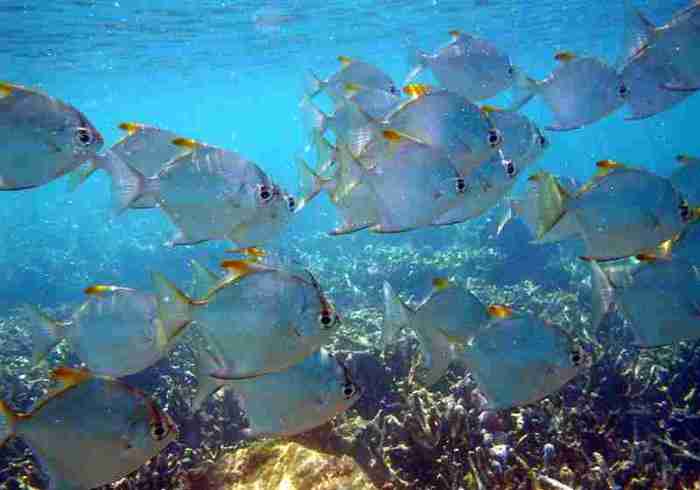
Estuaries, dynamic ecosystems where freshwater rivers meet the ocean’s saline waters, are influenced by a complex interplay of physical and chemical factors. These abiotic factors, such as salinity, temperature, pH, and nutrient availability, play a crucial role in shaping the distribution, abundance, and behavior of estuarine organisms.
Salinity
Salinity, a measure of dissolved salts in water, is a primary abiotic factor in estuaries. It varies widely from freshwater in the upper reaches to seawater in the lower reaches. Organisms in estuaries have evolved specific adaptations to tolerate varying salinity levels, ranging from freshwater species to euryhaline species that can withstand a wide range of salinities.
Temperature
Temperature is another important abiotic factor in estuaries. It affects the metabolic rates, growth, and distribution of organisms. Estuarine temperatures can fluctuate significantly due to tidal cycles, seasonal changes, and freshwater inflows. Some organisms, such as fish and invertebrates, can move to different areas of the estuary to find more suitable temperatures.
pH
pH, a measure of acidity or alkalinity, is another key abiotic factor in estuaries. It influences the solubility of nutrients, the availability of ions, and the metabolic processes of organisms. Estuarine pH can be influenced by factors such as freshwater inputs, photosynthesis, and respiration.
Salinity
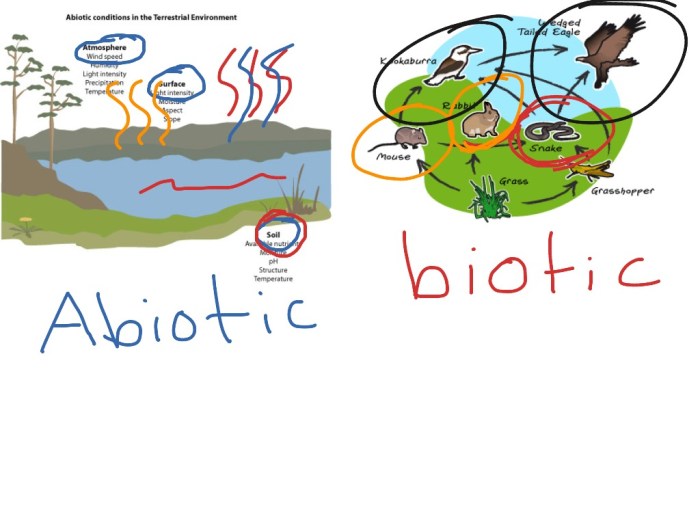
Salinity, the amount of dissolved salts in water, is a critical abiotic factor in estuaries. It varies significantly with tidal cycles and freshwater inputs, creating a dynamic environment that challenges the physiological adaptations of estuarine organisms.
Estuaries typically exhibit a salinity gradient, ranging from freshwater at the head to saltwater at the mouth. During high tide, saltwater intrudes further upstream, increasing salinity levels. Conversely, during low tide, freshwater flows downstream, reducing salinity. Freshwater inputs from rivers and streams also influence salinity, with higher flows diluting saltwater concentrations.
Physiological Adaptations
Estuarine organisms have evolved various physiological adaptations to cope with fluctuating salinity levels. Some species, such as euryhaline organisms, can tolerate a wide range of salinities. They possess mechanisms to regulate their internal salt balance, enabling them to survive in both freshwater and saltwater environments.
Other species, known as stenohaline organisms, have a narrow tolerance range and are restricted to specific salinity regimes. For example, freshwater species cannot survive in saltwater due to their inability to excrete excess salt, while marine species may struggle in freshwater due to osmotic stress.
Impact on Species Distribution
Salinity plays a crucial role in determining species distribution within an estuary. Euryhaline species are more widely distributed, while stenohaline species are confined to specific salinity zones. The distribution of these species can shift with changes in salinity levels, such as during seasonal variations or extreme events.
For instance, during periods of high freshwater inflow, freshwater species may extend their range upstream, while marine species may retreat downstream. Conversely, during periods of low freshwater inflow, saltwater species may penetrate further upstream, displacing freshwater species.
Impact on Abundance
Salinity also affects the abundance of estuarine organisms. Some species are more abundant in certain salinity regimes, while others are less common. For example, oysters and barnacles are typically more abundant in areas with higher salinity, while freshwater fish and amphibians are more common in areas with lower salinity.
The abundance of a species can be influenced by factors such as food availability, competition, and predation, which may vary with salinity levels. Salinity can also affect the reproductive success and survival of organisms, influencing their population dynamics.
Impact on Community Structure
Salinity plays a significant role in shaping the overall community structure of an estuary. Different salinity regimes support distinct assemblages of species, creating a mosaic of habitats within the estuary.
For example, the upper estuary, with its lower salinity, may be dominated by freshwater species such as fish, amphibians, and aquatic plants. The middle estuary, with its intermediate salinity, may support a mix of freshwater and saltwater species, such as euryhaline fish and invertebrates.
The lower estuary, with its higher salinity, may be dominated by marine species such as crabs, shrimp, and oysters.
Temperature
Estuaries are dynamic environments where temperature can vary significantly due to various factors. Understanding these fluctuations and their impacts is crucial for comprehending estuarine ecology.
Seasonal Changes
Temperature in estuaries follows seasonal patterns, influenced by solar radiation and air temperature. During summer, increased solar radiation heats the water, leading to higher temperatures. Conversely, during winter, reduced sunlight and cold air temperatures result in lower water temperatures.
Tidal Mixing
Tidal mixing plays a significant role in temperature regulation. Incoming tides bring cooler ocean water into the estuary, while outgoing tides carry warmer water out. This mixing helps moderate temperature fluctuations and creates a more stable environment for estuarine organisms.
Solar Radiation, Abiotic factors in an estuary
Solar radiation directly heats the water surface, creating a vertical temperature gradient. The upper layers of the water column are typically warmer, while the deeper layers remain cooler. This gradient can influence the distribution and behavior of organisms within the estuary.
Impacts on Estuarine Organisms
Temperature exerts a profound influence on the metabolic rates, growth, and reproduction of estuarine organisms. Optimal temperatures allow for efficient metabolism and promote growth. However, extreme temperatures can stress organisms, reduce their metabolic rates, and impair their reproductive success.
Consequences of Temperature Extremes and Climate Change
Climate change is predicted to increase the frequency and intensity of temperature extremes in estuaries. Rising water temperatures can lead to heat stress, reduced dissolved oxygen levels, and increased susceptibility to disease in estuarine organisms. These changes have the potential to disrupt food webs, alter community composition, and reduce the overall resilience of estuarine ecosystems.
pH: Acid-Base Balance and Implications
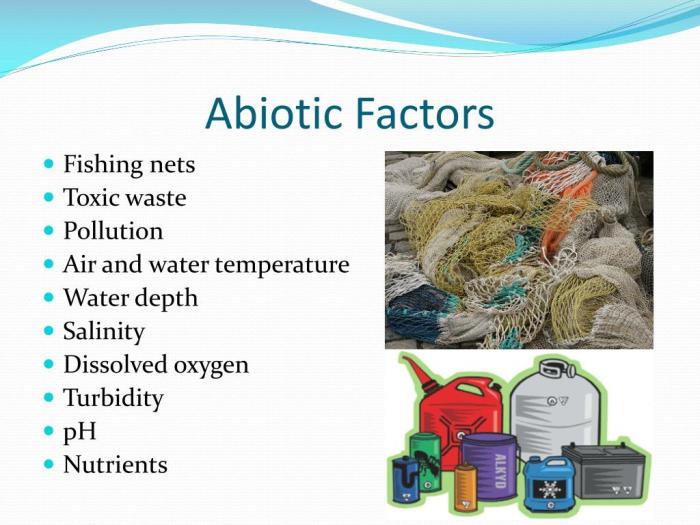
Estuaries are dynamic environments where the pH level, a measure of acidity or alkalinity, can vary significantly. This variability is influenced by a combination of factors, including photosynthesis, respiration, and nutrient inputs.Photosynthesis, the process by which plants and algae convert sunlight into energy, consumes carbon dioxide from the water, leading to an increase in pH.
Conversely, respiration, the process by which organisms break down organic matter for energy, releases carbon dioxide into the water, lowering the pH. Nutrient inputs, such as nitrogen and phosphorus, can also affect pH levels by promoting the growth of algae and other organisms that influence the balance of photosynthesis and respiration.
Physiological Effects of pH on Estuarine Organisms
pH levels can have profound physiological effects on estuarine organisms. Many species have evolved to tolerate a specific range of pH levels, and deviations from this range can disrupt their metabolism, growth, and reproduction. For example, low pH levels can inhibit the activity of enzymes, which are essential for various biological processes.
Potential Impacts of Ocean Acidification on Estuarine Ecosystems
Ocean acidification, the gradual decrease in pH levels of the world’s oceans, is a growing concern for estuarine ecosystems. As the pH of seawater decreases, it becomes more acidic, potentially affecting the survival and growth of calcifying organisms such as shellfish and corals.
These organisms rely on calcium carbonate to build their shells and skeletons, and acidic conditions can make it more difficult for them to do so.
Dissolved Oxygen: Availability and Importance
Dissolved oxygen (DO) is a critical abiotic factor in estuaries, influencing the survival, distribution, and behavior of organisms. The availability of DO is affected by various factors, including temperature, salinity, and biological activity.
Abiotic factors, such as salinity, temperature, and light availability, play a crucial role in shaping the ecology of an estuary. Isaac Asimov, in his classic science fiction story “The Last Answer” , explores the concept of a supercomputer that can calculate the ultimate question of life, the universe, and everything.
While the story’s focus lies beyond the realm of estuary ecology, its exploration of the fundamental nature of knowledge and the limits of human understanding serves as a reminder of the complex and interconnected nature of both the natural and the theoretical worlds.
Returning to the topic of abiotic factors in an estuary, their dynamic interplay influences the distribution and abundance of organisms within this unique and productive ecosystem.
As temperature increases, the solubility of oxygen in water decreases. This means that warmer estuaries typically have lower DO levels than cooler estuaries. Salinity also affects DO levels, with higher salinity leading to lower DO levels. This is because salt ions compete with oxygen molecules for space in the water, reducing the amount of oxygen that can dissolve.
Biological activity can also affect DO levels. Photosynthesis by phytoplankton and macroalgae produces oxygen, while respiration by organisms consumes oxygen. The balance between these processes determines the overall DO levels in an estuary.
Physiological Adaptations of Estuarine Organisms
Estuarine organisms have evolved various physiological adaptations to cope with varying oxygen concentrations. Some organisms, such as fish and crabs, have specialized respiratory structures that allow them to extract oxygen from water with low DO levels. Others, such as mussels and clams, can close their shells to conserve oxygen during periods of hypoxia.
Consequences of Hypoxia
Hypoxia (low oxygen levels) can have severe consequences for estuarine ecosystems. When DO levels drop below a certain threshold, organisms begin to experience stress, reduced growth rates, and impaired reproduction. In severe cases, hypoxia can lead to mortality and habitat loss.
Turbidity
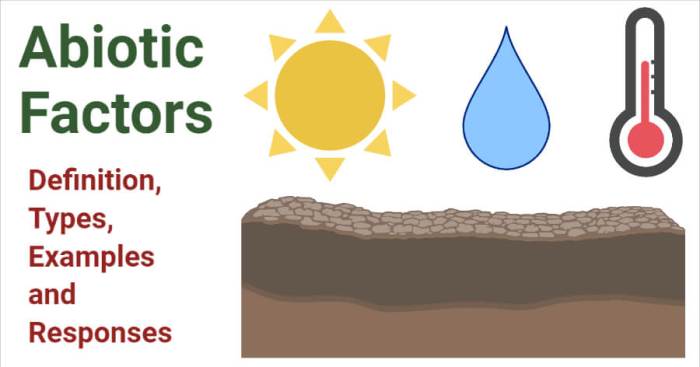
Turbidity, a measure of water clarity, is a critical abiotic factor in estuaries. It influences the amount of light that penetrates the water column, affecting various ecological processes.Turbidity in estuaries originates from several sources. Sediment inputs from rivers, resuspension of bottom sediments due to currents and tides, and algal blooms contribute to the variability of turbidity levels.
Light Penetration and Underwater Visibility
Turbidity significantly affects light penetration into the water column. Suspended particles scatter and absorb light, reducing underwater visibility. High turbidity levels can limit the depth at which photosynthetic organisms can thrive, affecting primary production and the distribution of underwater habitats.
Ecological Implications
Turbidity has profound ecological implications for estuarine organisms. It can:
- Impair primary production:Reduced light penetration inhibits the growth of phytoplankton and macroalgae, which are essential food sources for many estuarine organisms.
- Alter predator-prey interactions:Turbidity affects the ability of predators to locate prey and vice versa. Some species may benefit from increased turbidity, while others may be disadvantaged.
- Influence habitat selection:Turbidity can influence the distribution and abundance of estuarine organisms by affecting their habitat preferences and survival.
Nutrient Availability
Nutrients are essential elements that organisms require for growth, reproduction, and survival. In estuaries, the availability of nutrients plays a crucial role in shaping the structure and function of the ecosystem.The primary nutrients required by estuarine organisms are nitrogen, phosphorus, and silicon.
Nitrogen is essential for protein synthesis, phosphorus is vital for energy metabolism and nucleic acid synthesis, and silicon is crucial for the growth of diatoms, a type of phytoplankton that forms the base of many estuarine food webs. These nutrients enter estuaries from a variety of sources, including freshwater runoff, groundwater discharge, and atmospheric deposition.Nutrient
availability has a profound impact on primary production, which is the process by which plants and algae convert sunlight into energy. When nutrients are abundant, primary production increases, leading to a higher biomass of phytoplankton and macroalgae. This increased primary production supports a more diverse and productive food web, with higher abundances of zooplankton, fish, and other consumers.However,
excessive nutrient inputs can lead to nutrient enrichment and eutrophication, which can have detrimental effects on estuarine ecosystems. Eutrophication can cause algal blooms, which can block sunlight from reaching underwater plants and lead to oxygen depletion. It can also promote the growth of harmful algal species that can produce toxins that are harmful to humans and wildlife.To
manage nutrient availability and prevent eutrophication, it is important to control nutrient inputs from human activities, such as agricultural runoff, sewage discharge, and industrial wastewater. By reducing nutrient pollution, we can help maintain the health and productivity of estuarine ecosystems.
Physical Structure
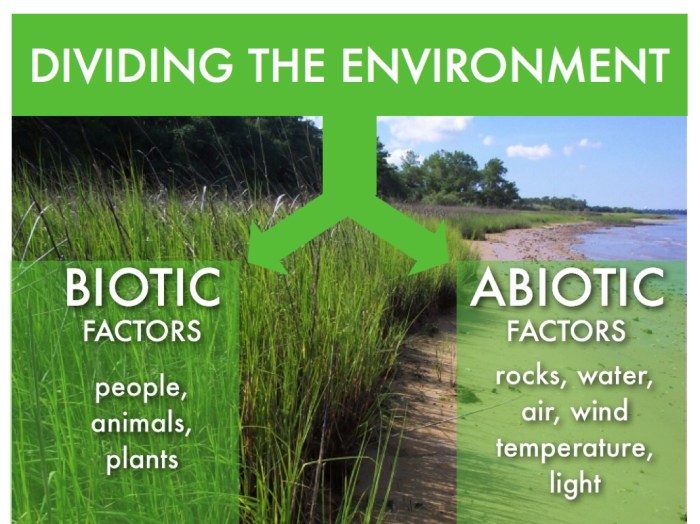
Estuaries exhibit a diverse physical structure, shaped by the interplay of freshwater and saltwater, creating unique habitats for a variety of organisms. These habitats include intertidal zones, mudflats, and salt marshes.
Intertidal Zones
Intertidal zones are areas of the estuary that are alternately submerged and exposed by the tides. These zones provide a rich habitat for organisms that can tolerate varying salinity levels and periodic exposure to air. Common intertidal organisms include barnacles, mussels, and crabs.
Mudflats
Mudflats are areas of fine sediment that are exposed at low tide. They are often found in sheltered areas of the estuary and provide a feeding ground for wading birds and other shorebirds. Mudflats also play a role in filtering pollutants and stabilizing the shoreline.
Salt Marshes
Salt marshes are coastal wetlands dominated by salt-tolerant plants such as cordgrass and pickleweed. They are important habitats for fish, shellfish, and birds, providing nursery grounds, feeding areas, and nesting sites. Salt marshes also act as natural buffers against storms and floods.
The physical structure of estuaries is crucial for supporting the diverse array of organisms that inhabit these ecosystems. Maintaining natural physical structure is essential for the health and resilience of estuarine ecosystems.
FAQ Summary: Abiotic Factors In An Estuary
What are abiotic factors?
Abiotic factors refer to the non-living components of an ecosystem, such as salinity, temperature, pH, dissolved oxygen, turbidity, nutrients, and physical structure.
How do abiotic factors influence estuarine organisms?
Abiotic factors play a crucial role in shaping the distribution, abundance, and interactions of estuarine organisms by influencing their physiological adaptations, metabolic rates, growth, reproduction, and habitat selection.
What are the major abiotic factors in estuaries?
Key abiotic factors in estuaries include salinity, temperature, pH, dissolved oxygen, turbidity, nutrients, and physical structure.
How do human activities impact abiotic factors in estuaries?
Human activities, such as pollution, land-use changes, and climate change, can significantly alter abiotic factors in estuaries, leading to changes in estuarine ecosystems.
Why is it important to study abiotic factors in estuaries?
Understanding abiotic factors in estuaries is crucial for managing and conserving these ecosystems, predicting the impacts of environmental change, and mitigating human-induced alterations.